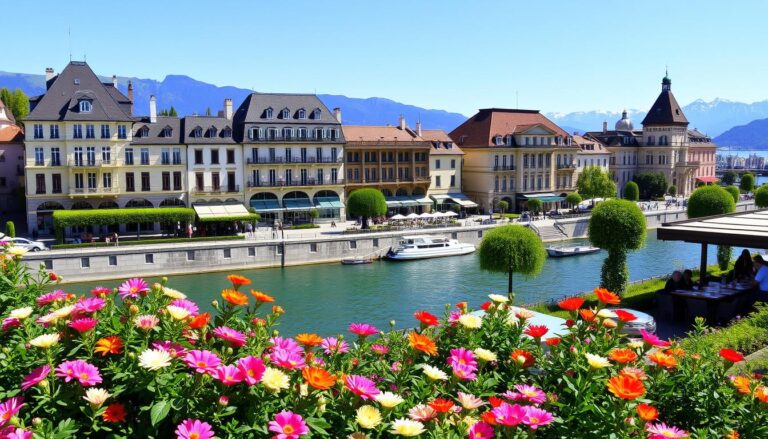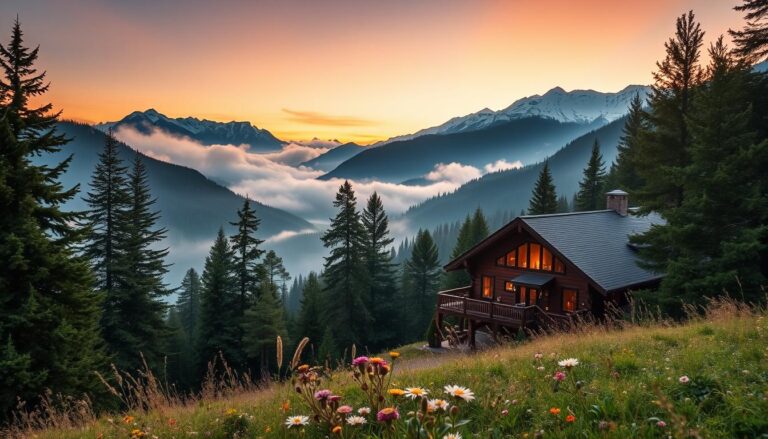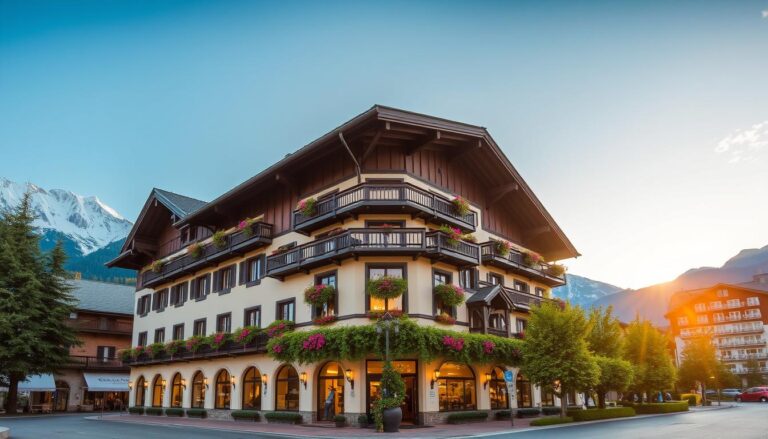3 Must-Try Transportation Modes for Visiting the Swiss Alps
Planning a trip to the Swiss Alps? You’re thinking about the best ways to see the stunning views and outdoor fun. The Swiss Alps offer 3 main ways to travel, each with its own charm. Knowing these options can make your trip better.
Imagine traveling through the Swiss Alps with ease and saving money. The Ultimate Guide to Swiss Transportation is a great tool for this. It’s only $39, making it a smart choice for your travel plans. Whether you want to save or just enjoy the Alps, picking the right transport is key.
Choosing the right transport lets you see the Alps’ beauty and learn about its culture. With the right tips, you can use the 3 modes of Transportation in the Swiss Alps to make your trip unforgettable. Whether you love trains, cable cars, or hiking, there’s something for everyone. Your trip will surely be one to remember.
Table of Contents
Introduction to the Swiss Alps Transportation
Planning a trip to the Swiss Alps means picking the right way to get around. You can choose from trains, buses, and cable cars. Each has its own pros and cons. The Swiss Alps have a great network of transport, making it simple to explore.
The Swiss Travel Pass is a great choice. It lets you travel freely on public transport and even gets you discounts at over 500 museums. Plus, you can save up to 50% on mountain railways.
Trains are a favorite among travelers. Rick Steves says rail passes are a smart buy in Switzerland. The Swiss Travel Pass is especially good, covering almost all transport. It’s perfect for getting to ski resorts.
Using public transport in the Swiss Alps has many benefits:
- Convenience: It’s easy to find and use.
- Affordability: The Swiss Travel Pass is a budget-friendly option.
- Environmental benefits: Trains are better for the planet than driving.
Scenic Train Journeys
Train travel in the Swiss Alps offers endless options. A popular way to see the Swiss Alps’ beauty is by scenic train. The Mountain transport Swiss Alps has trains for all tastes and needs.
Glacier Express: A Ride Through the Mountains
The Glacier Express is known as the ‘Slowest Express Train in the World’. It’s famous for its stunning views. It takes about 8 hours to go from Zermatt to Saint Moritz, showing off the Swiss Alps’ beauty.
Bernina Express: Alpine Wonders on Wheels
The Bernina Express takes about 4 hours, from Chur to Tirano. It shows off the Alps’ beauty, crossing 196 bridges and 55 tunnels. The Bernina Pass is 7,391 feet high, making it an exciting trip.
Regional Train Networks: Connectivity Across the Alps
The Swiss Alps’ regional trains connect the area well. They run often, and you don’t always need to book. These trains offer scenic views all year, from green fields in spring to snowy mountains in winter.
Some key features of the scenic train journeys in the Swiss Alps include:
- Year-round appeal, with fewer crowds and beautiful autumn colors in November
- Panoramic views of the Alps, including the Matterhorn and other iconic peaks
- Availability of passes such as the Swiss Travel Pass, Half Fare Travel Card, or Eurail Pass for savings on multiple train rides
Breathtaking Cable Cars and Gondolas
Exploring the Swiss Alps lets you see breathtaking views from cable cars and gondolas. These aerial rides offer a unique look at the mountains. The Cable cars Swiss Alps are a favorite way to see scenic trails and amazing views. For example, the Klein Matterhorn in Zermatt is the highest cable car station in Europe, at 3,883 meters.
Popular gondolas include the Matterhorn Glacier Paradise and the Titlis Rotair. The Titlis Rotair is the first revolving cable car in the world. You can also ride Mountain biking transport Switzerland options to see the Alps from a different angle.
It’s important to stay safe on cable cars. Hold onto handrails and keep loose items secure. The SBB Mobile App helps you navigate the Swiss transportation system, including cable cars and gondolas.
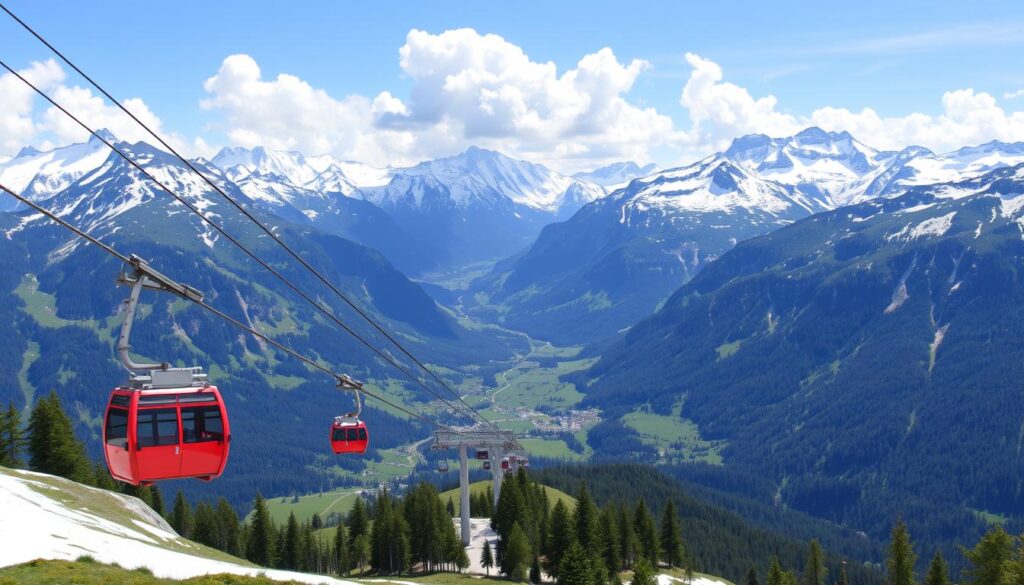
- Plan your itinerary according to the operating hours of the cable cars and gondolas.
- Check the weather forecast before heading out, as some cable cars may be closed due to strong winds or other weather conditions.
- Take advantage of the scenic views and photo opportunities, but always prioritize your safety.
| Cable Car | Altitude | Duration |
|---|---|---|
| Matterhorn Glacier Paradise | 3,883 meters | 9 minutes |
| Titlis Rotair | 3,020 meters | 30 minutes |
| Jungfraujoch Eiger Express | 3,454 meters | 15 minutes |
Exploring by Bicycle
Mountain biking transport Switzerland is a fun way to see the Swiss Alps. Over 60% of Switzerland is mountains. You’ll find many places to ride your bike.
Exploring by bike lets you see the views at your own pace. Rent an e-bike for a ride with stunning views. Hiking is also great, with many trails for walkers and hikers.
E-Bike Rentals and Their Benefits
E-bike rentals are perfect for beginners. Many shops offer e-bikes with different levels of help. This lets you choose a ride that fits your skill level.
Popular Cycling Trails in the Swiss Alps
Try the Furka Pass, Gotthard Pass, and Nufenen Pass for great rides. These trails have amazing views and challenging climbs. You’ll see elevation gains from 300 ft. to 3,600 ft.
Safety Tips for Cyclists in the Alps
Always wear a helmet and follow traffic rules when biking in the Alps. Be mindful of your surroundings. Renting a bike with a guide or joining a tour can make your ride safer and more fun.
Exploring the Swiss Alps by bike is exciting and memorable. Whether you’re experienced or new to biking, mountain biking transport Switzerland and hiking transport Swiss Alps are great ways to see the beauty of the region.
Walking and Hiking Trails
Exploring the Swiss Alps reveals a vast network of trails for all. The hiking transport Swiss Alps offers stunning views and challenging paths. With over 65,000 km of trails, you can pick from many routes, including famous Ski resorts transportation Switzerland trails.
Popular trails like the Tour du Mont Blanc and Walker’s Haute Route are must-sees. They provide breathtaking views and a chance to see local wildlife. You can hike alone or join a guided tour for a unique experience.
The best time for hiking is July to August. But, be ready for changing weather, even in summer. Hiking costs range from 70-115 Euros per day, covering accommodation and food. You can stay in campsites, dorms, or private rooms, with prices starting at 55-80 Euros.
Recommended Hiking Routes
- Blausee Lake: 1 km, approximately 15 minutes
- Aare Gorge: 1.4 km, approximately 40 minutes
- Caumasee Lake: 1.5 km, approximately 17 minutes
- Oeschinensee Lake: 1.6 km, approximately 19 minutes (requires cable car)
Always check the trail’s conditions and what you need before you go. The Swiss Alps have well-marked trails, beautiful scenery, and a rich culture. It’s a hiking experience you won’t forget.
Rental Cars and Driving in the Alps
Renting a car is a good choice for exploring the Swiss Alps at your own pace. The Swiss Alps offer many ways to get around, and driving lets you see the views and roads up close. But, think about the costs, like the daily rental fee, fuel, and fines for breaking rules.
Driving in the Alps means you need a Swiss motorway vignette and must drive slowly on narrow roads. Traffic jams can happen in big cities during rush hour. Also, tunnels can have long waits during busy times. Speed limits change, from 120 km/h on highways to 50 km/h in cities and towns.
Essential Driving Tips for Alpine Roads
To drive safely and enjoyably, follow these tips:
- Be ready for weather changes, especially in winter.
- Use low gear when going uphill and avoid sudden stops.
- Keep a safe distance from other cars and watch out for pedestrians and cyclists.
If you’re new to driving in mountains, especially in winter, it’s wise to have experience. The Swiss public transport is top-notch, but driving gives a special view of the Alps. By weighing the pros and cons of renting a car and following these tips, you’ll have a great time in the Swiss Alps.
Waterways and Ferries
Exploring the Swiss Alps offers many travel options, including waterways and ferries. A popular choice is a scenic boat ride on Lake Geneva. It gives you amazing views of mountains and villages.
There are also unique ferry rides in the Alps. For example, the ferry from Montreux to Vevey crosses Lake Geneva. You’ll see the Chillon Castle and enjoy stunning views. Combining water transport with Train travel Swiss Alps makes your trip memorable and easy.
Some top ferry routes in the Swiss Alps are:
- Lake Geneva: Montreux to Vevey
- Lake Lucerne: Lucerne to Vitznau
- Lake Constance: Konstanz to Kreuzlingen
The Swiss Travel Pass is perfect for travelers. It covers lake boats and most boat trips, with a few exceptions. This pass saves you time and money, enhancing your Swiss Alps travel modes experience.
Public Transportation Accessibility
Exploring the Swiss Alps is easy thanks to its public transport system. The Mountain transport Swiss Alps connects many areas. The Cable cars Swiss Alps offer stunning views.
The Swiss rail network is dense and reliable. Trains run often, with a 5-minute average wait. A 15-day pass costs 459 Swiss Francs.
Some key features of the public transport system include:
- Discounted or free access to travel passes for youths under 25 and children under 16
- Half Fare Travelcard, which reduces train ticket prices by 50%
- Supersaver tickets, which can discount fares up to 70%
Exploring the Swiss Alps is easy with its transport system. You can use trains, buses, or Cable cars Swiss Alps. It’s all well-integrated and simple to use.
The public transport in the Swiss Alps is a great way to see the mountains. It’s convenient and well-organized.
| Transport Mode | Frequency | Reliability |
|---|---|---|
| Trains | Every 5 minutes | 95% |
| Buses | Every 10 minutes | 90% |
| Cable Cars | Every 15 minutes | 95% |
Environmental Considerations in the Alps
When you’re in the Swiss Alps, think about how your travel choices affect the environment. The area’s delicate ecosystem is at risk from pollution, noise, and habitat loss. To leave a smaller mark, choose Swiss Alps transportation options like trains or buses. They emit less pollution than cars.
For getting to Ski resorts transportation Switzerland, use public transport or shuttles. This cuts down on road traffic and lessens congestion. Many ski resorts have green transport options, like electric or hybrid vehicles.
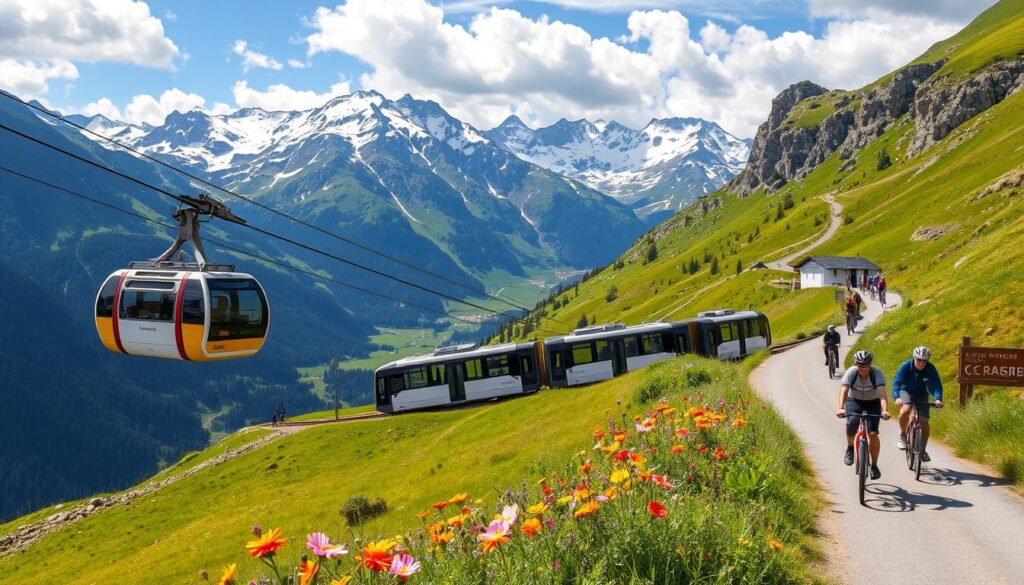
Support sustainable travel by staying in places that care about the environment. Look for places with energy-saving lights and waste reduction plans. Your choices can help keep the Swiss Alps beautiful for others to enjoy.
Some important facts to remember:
- Transport is responsible for 48% of Switzerland’s CO2 emissions.
- Most of Switzerland’s energy comes from road traffic, mainly from oil.
- About one third of Switzerland’s energy use is for sustainable transport.
Conclusion: Choosing the Right Mode for Your Journey
When planning your trip to the Swiss Alps, think about what you want to see and do. You can choose from scenic train rides, stunning cable car views, or eco-friendly bike paths. Each way gives you a special look at the beautiful mountains. The 3 modes of transportation in the Swiss Alps – trains, aerial lifts, and bicycles – make your trip better.
Matching Transport Type with Travel Goals
For amazing views, try the Glacier Express or Bernina Express trains. If you want adventure, cycling or hiking is perfect. For easy access to remote spots, renting a car or using public transport works well.
Final Thoughts on Alps Transportation Experiences
No matter your choice, the Swiss Alps travel modes let you dive into nature’s beauty. With the Swiss Travel Pass and public transport, exploring the Swiss Alps is easy. You’ll make memories that last a lifetime.



